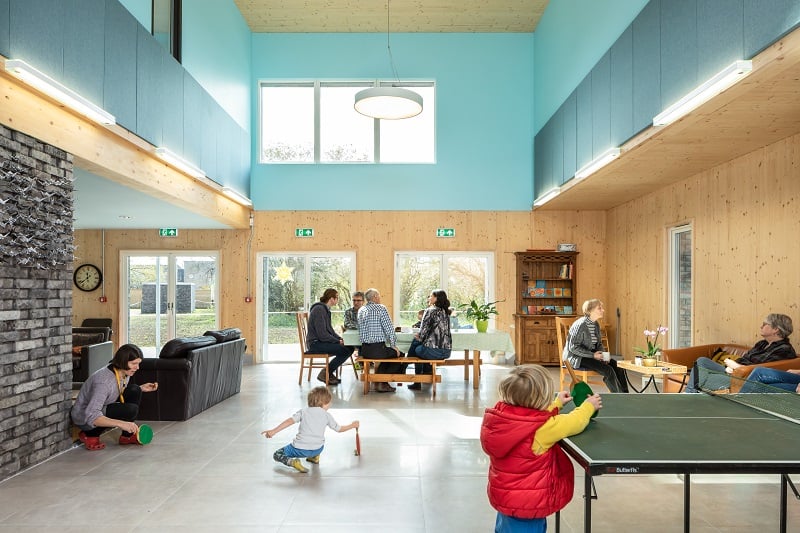Summary of this issue of Interface
The May 2022 edition of Interface is a collection of 7 essays exploring how community-led housing - an innovative alternative to the market-led housing sector - can help solve the crisis of unaffordable housing on both sides of the Atlantic.
As Linda Bates explains in her introduction, the authors of this collection offer many useful concepts, tools and models for how community housing can be built and sustained, drawing on examples from the UK, Canada and the US.
She notes the breadth of contributions, which range from Ren Thomas: “observing the housing crisis in Canada, and the need to turn from exchange value to use value”, and Anna Hope: “echoing the call for more creativity and flexibility to create community housing models in England” to Tom Chance, who: “writing about England’s Community Land Trust (CLT) movement… suggests that land ownership and the planning system could embrace the concept of commonwealth”.
She also notes Wang & Thaden, Lowe, and Malson who examine: “the roots of the Community Land Trust in the US Civil Rights Movement and Black liberation politics” and by doing so “represent a spectrum of thinking about how community-owned housing can be a foundation for social justice and political mobilization.”
As Linda Bates concludes: “shifting not only our mindsets but our policy and planning systems from housing for profit to housing for people will require social movement and political action…” yet “this Interface makes clear that we do know how to create resilient housing forms where people can be stably and safely at home, if we can create the will to make it happen.”

Marmalade Lane, a community-led housing development in Cambridge © David Butler
This Interface includes the following contributions:
- ‘Introduction: “Housing for People, Not for Profit”: But How?’ Lisa K. Bates
- ‘Housing as a Collective Investment, Versus a Means to Individual Wealth.’ Ren Thomas
- ‘Community-Led Housing in England: From Adversity to Diversity.’ Anna Hope
- ‘Future of Community Housing? Informed by Experience in the UK.’ Mary Taylor
- ‘Making the Commons More Commonplace in England?’ Tom Chance
- ‘Advancing Racial Equity Through Community Land Trusts.’ Ruoniu (Vince) Wang and Emily Thaden
- ‘Housing and More: The Role of Community Land Trust in Disruption, Equity and Justice.’ Jeffrey Lowe
- ‘Reaping What We Sow: The Decolonizing Root of Black Experiments with Cooperative Housing and Land Tenure.’ Hilary Malson
Planning Theory & Practice is the RTPI's internationally regarded research journal. It provides a focus for the development of theory and practice in spatial planning and encourages the development of a spatial dimension in other areas of public policy. It examines policy development in fields such as housing, regeneration, transport, urban design, participatory practice, diversity and climate change.
Interface is a section within Planning Theory & Practice which takes an original approach to stimulating critical and challenging debate between academics and practitioners on planning matters. It encourages analytical reflection on practice and practical engagement with theory. Each issue offers a useful multifaceted investigation of a topical theme, in the form of a series of contributions reflecting on an issue from different perspectives.
Full reference
Bates, L. K. (2022) ‘Housing for People, Not for Profit: Models of Community-Led Housing’, Planning Theory & Practice 23(2), pp. 267–302. https://doi.org/10.1080/14649357.2022.2057784
